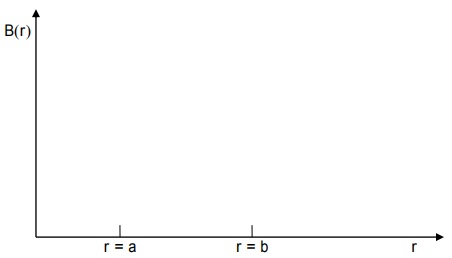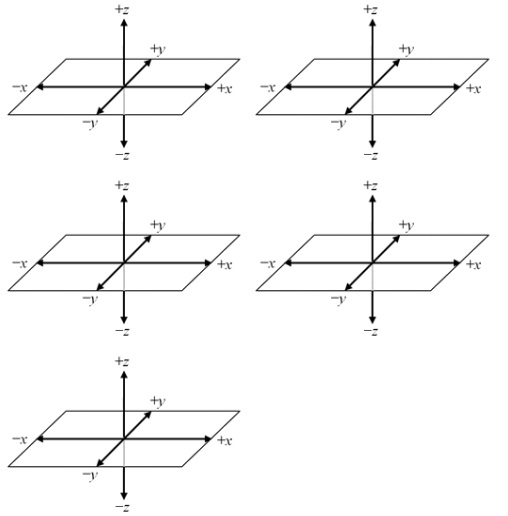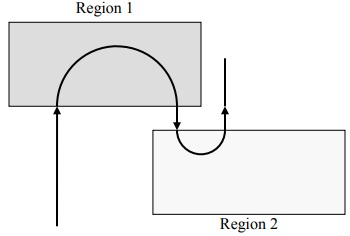Assignment:
Part 1:
The figure below shows the cross-sectional view of a coaxial cable that consists of a "core" wire of radius that carries a uniform current out of the page, whilst the "shielding" is a very thin cylindrical metal shell of radius that carries a current into the page. Your aim is to use Ampère's Law to determine the magnetic field as a function of the distance from the cylinder axis. The exercise is divided into three distinct regions as indicated below. In each case, you should show the following steps:
(a) Draw an appropriate closed loop for carrying out the Ampere Law integral, clearly indicating the direction of integration;
(b) Set up the integral, clearly indicating what is the current enclosed by the loop and how you selected the "sign" of the current involved;
(c) Solve the integral to yield an expression for B(r), and check what values it gives at boundaries (i.e. what are B(r) for r= a and r = b?);
(d) If the magnetic field is non-zero, indicate its direction (e.g. counter-clockwise or clockwise).

Q1. Region I: r > b
Q2. Region II:a< r < b
Q3. Region III: r < a
Q4. Sketch below the variation of B(r).

Part 2:
The following equations describe five situations in which a proton with velocity v→ is moving through a magnetic field B→.
I. v→ = 4iˆ - 3jˆ m/s and B→ = 2kˆ T
II. v→ = 3iˆ + 4jˆ m/s and B→ = -5kˆ T
III. v→ = 3jˆ - 4kˆ m/s and B→ = 5iˆ T
IV. v→ = 3iˆ + 4jˆ + 5kˆ m/s and B→ = 6iˆ + 8jˆ + 10kˆ T
V. v→ = 3iˆ + 4jˆ +5kˆ m/s and B→ = 3iˆ + 4jˆ - 5kˆ T
Q5. For each of the five situations above, make a sketch the velocity and magnetic field vectors in a way that clearly shows the relative orientation of the two vectors in 3D, being sure to label both vectors. On the same sketch, then indicate the direction of the magnetic force exerted on the proton. Your sketches need not be perfect; the purpose of this exercise is to become more comfortable with visualizing the orientation of the vectors.

Q6. Now, rank the five situations given above in order of increasing magnetic force on the proton. Note that there may be more than one way to correctly determine this ranking. For example, based on your sketches, are the velocity and magnetic field perpendicular to each other? Are they parallel? If they are either perpendicular or parallel, can you use this to calculate the magnitude of the force, based only on your knowledge of the magnitudes of the vectors and the angle between them? If not, how must you determine the magnitude of the force? Be sure to show the calculations which support your ranking.
Part 3:
The figure below shows the path of a proton (mass mp) as it passes through two regions of space (labeled 1 and 2) containing uniform magnetic fields of magnitudes B1 and B2, respectively. Both fields are oriented perpendicular to the page. The proton's path in each region is a semi-circle of radius R1 and R2, respectively. In answering the questions that follow, make sure you defend each of your answers with a well-reasoned argument.

Q7. Does the proton move faster in one region than the other? Why or why not?
Q8. Is the magnetic field stronger in one region than the other? If so, which magnetic field is stronger and how can you tell?
Q9. What are the directions of the two magnetic fields?
Q10. Does the proton spend more time in region 1 or region 2?
Q11. If we replaced the proton with an electron (mass me=5.44×10-4mp) while leaving the rest of the experiment the same (i.e., same initial velocity, same magnetic fields, same starting point, etc.), how would the path followed by the electron be different?